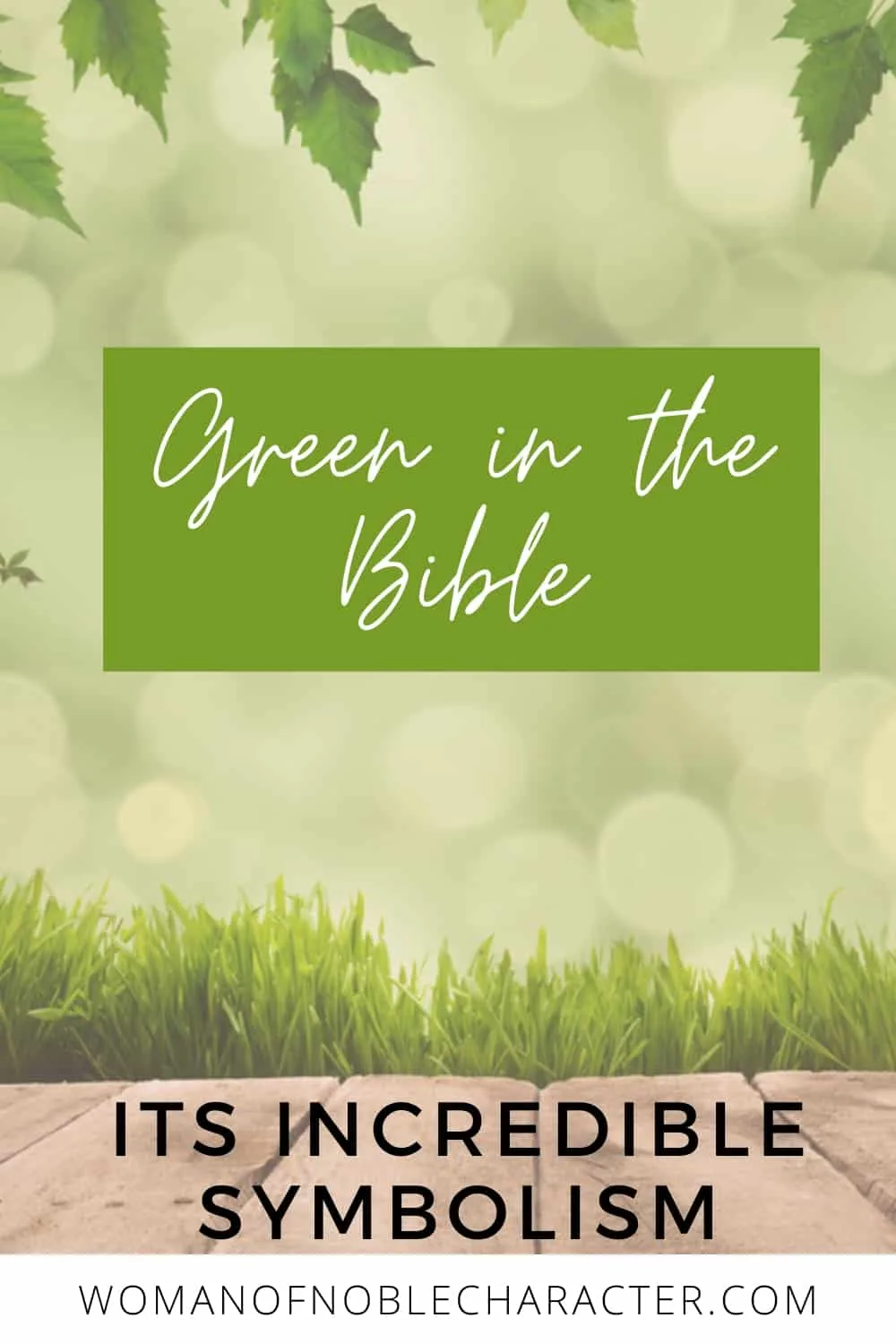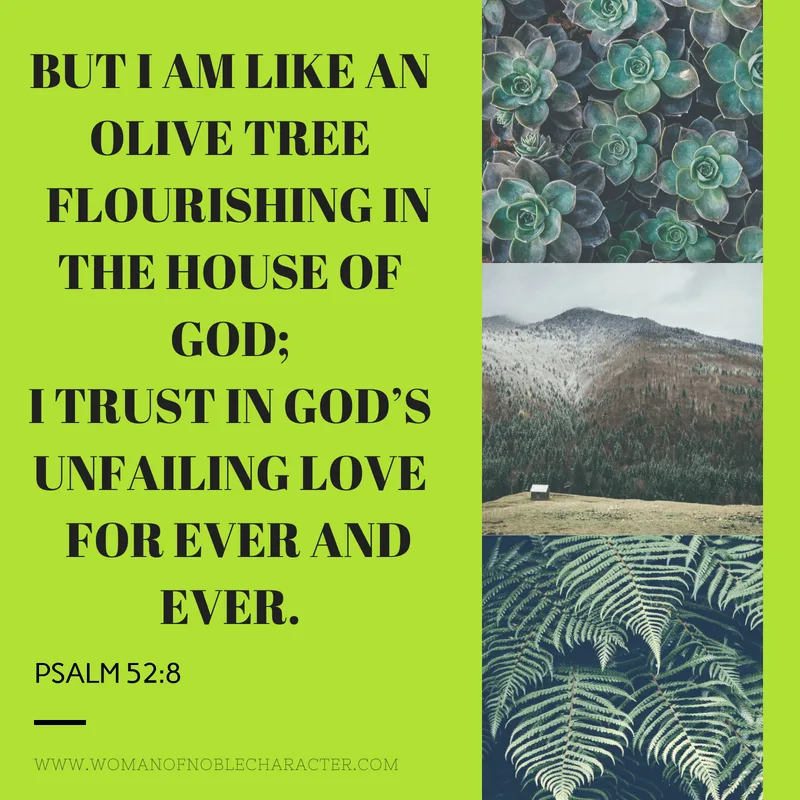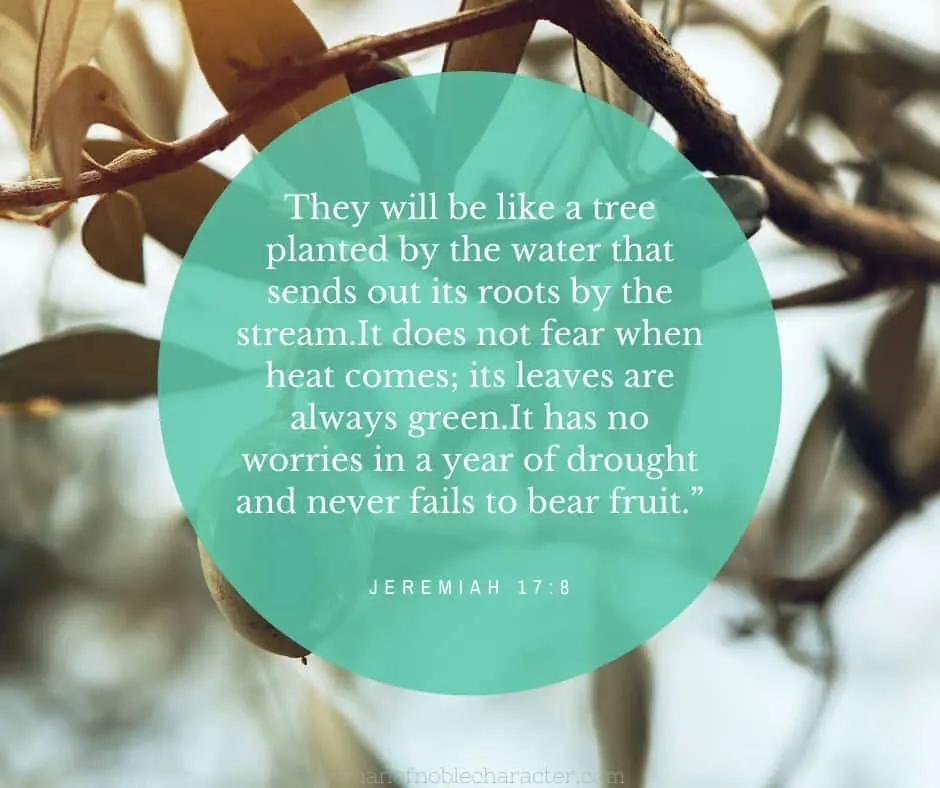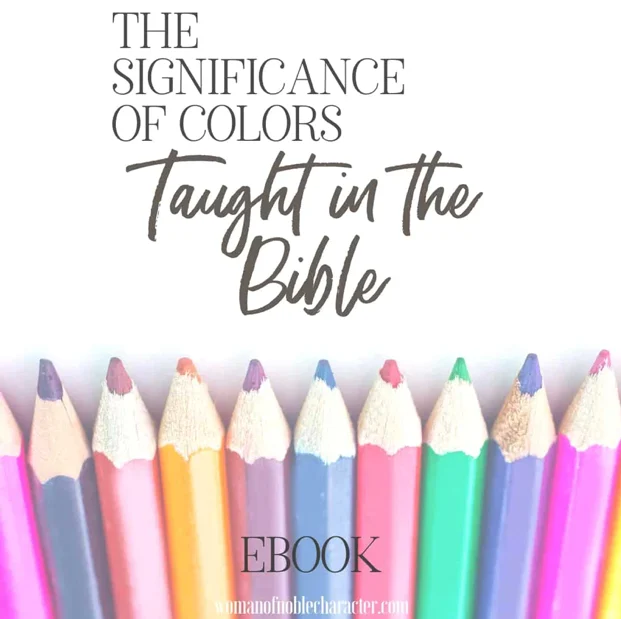This page/post may contain affiliate links. As an Amazon Associate, as well as an affiliate of other programs, this means if you purchase something using these links, I will receive a commission on qualifying purchases at no cost to you! For more detailed information, please visit our Affiliate Disclaimer page
Colors in the Bible have such rich symbolism. Over the past year, we’ve been examining the colors in the Bible (Red, Blue, Yellow, white, and black), and today, we’ll park on green and take a good look at the color green in the Bible. (For an overview of colors in the Bible, see this post).
Symbolic Meanings of Green in the Bible
Green, a secondary color, is made by mixing Yellow (trials, for one) with Blue (Word of God, living water, etc). So combining yellow and blue gives us green. Most biblical scholars agree that one of the primary meanings behind green in the Bible is immortality.
the waters of Nimrim
Isaiah 15:6 (ESV)
are a desolation;
the grass is withered, the vegetation fails,
the greenery is no more.
Green is also symbolic of resurrection and the greenness of Spring, praise, growth, prosperity, a new beginning, flourishing, and restoration. The color green occurs rather often in Scripture, usually referring to the color of vegetation.

The color green in the Bible is associated with everlasting life, growth, and fertility. It also appears for nations and is also used to signify fruitfulness.
The idea of fruitfulness is described in the following passage, where God furnishes His children with everything they need for their spiritual sustenance and the confidence that His children will place in Him will bear fruits:
“Blessed is the man who trusts in the Lord,
Jeremiah 17:7-8 (ESV)
whose trust is the Lord.
He is like a tree planted by water,
that sends out its roots by the stream,
and does not fear when heat comes,
for its leaves remain green,
and is not anxious in the year of drought,
for it does not cease to bear fruit.”
The color green also refers to the fragility of human life. We grow and thrive, but just for a time, then life ends.
“Can papyrus grow where there is no marsh?
Job 8:11-13 (ESV)
Can reeds flourish where there is no water?
While yet in flower and not cut down,
they wither before any other plant.
Such are the paths of all who forget God;
the hope of the godless shall perish.
Variations of the Hebrew word for green found in The Old Testament:
‘abiyb
(aw-beeb’)
In Leviticus, ‘abiyb’ is used to describe the greening of ears of corn. It was to be part of the first fruits offering – a seasonal offering to be made to God. The same word is used for the season of ‘greening’, or the onset of spring.
“If you offer a grain offering of firstfruits to the Lord, you shall offer for the grain offering of your firstfruits fresh ears, roasted with fire, crushed new grain.
Leviticus 2:14 (ESV)
‘Deshe
(deh’-sheh)
‘Deshe’ is another word used for the green of tender new shoots of grass. These would be the new shoots of grass, the light, almost yellow-green. It is the word used to describe green pastures.
He makes me lie down in green pastures.
Psalm 23:2 (ESV)
He leads me beside still waters.
The Lord is my Shepherd, I shall not fear. He provides me with food and towels to rest upon; even though it may be difficult at times for me, he will never leave or forsake his flock-no matter how far they wander from home.
“the waters of Nimrim
Isaiah 15:6 (ESV)
are a desolation;
the grass is withered, the vegetation fails,
the greenery is no more.”
And God said, “Let the earth sprout vegetation, plants yielding seed, and fruit trees bearing fruit in which is their seed, each according to its kind, on the earth.” And it was so.
Genesis 1:11 (ESV)
He makes me lie down in green pastures.
Psalm 23:2 (ESV)
He leads me beside still waters.
Ra’anan
(rah-an-awn’)
The Hebrew word for green, ra`anan, occurs most frequently (twenty times) in the Old Testament and always indicates the greenness of the mature leaves of trees. A thriving tree after several years of surviving the extremes of hot summers and frigid winters. This is the color of the leaves blooming with healthy roots deep and wide and branches reaching out. This color represents life and survival.
For they also built for themselves high places and pillars and Asherim on every high hill and under every green tree,
1 Kings 14:23 (ESV)
Shady mature trees with spreading branches were sadly the sites of many pagans, and idol worship. A majority of the verses using this word for green are found in verses where God condemns the rituals and false worship practiced under the leafy branches of majestic trees in high places.
Yaraq
(yaw-rawk’)
This form of the Hebrew word for green is most often found when describing herbs, vegetables, and other greens.
Better is a dinner of herbs where love is
Proverbs 15:17 (ESV)
than a fattened ox and hatred with it.
Yarowq
(yaw-rawk’)
This variation of a Hebrew word simply means greens, green plants, or green things.
He ranges the mountains as his pasture,
Job 39:8 (ESV)
and he searches after every green thing.
Yereq
(yeh’-rek)
“And to every beast of the earth and to every bird of the heavens and to everything that creeps on the earth, everything that has the breath of life, I have given every green plant for food.” And it was so.”
Genesis 1:30 (ESV)
The Hebrew word ‘yereq’ is one of the earliest Hebrew words used for green. In Genesis, it is a word that describes the greenness of edible herbs. It is the color of what food should be: fresh, vibrant, and sustaining life.
This green tree is also a powerful image of a righteous man who heeds God’s commandments.
They will be like a tree planted by the water
Jeremiah 17:8 (ESV)
that sends out its roots by the stream.
It does not fear when heat comes;
its leaves are always green.
It has no worries in a year of drought
and never fails to bear fruit.”
Unfortunately, mature trees with shade were often the sites of pagan idol worship. A majority of the verses using this word for green are found in verses where God condemns the rituals and false worship practiced under the leafy branches of majestic trees in high places.
All sorts of pagan sacrifices and incense were offered under mature trees, whose beauty should have been a visible reminder of the greatness of God. Green is, in this context, a color of strength, power, and vigor that could only have come from God himself.
In the Old Testament, we see the “spreading tree” misused and worshiped, twisted or perverted, provoking the following command:
You shall surely destroy all the places where the nations whom you shall dispossess served their gods, on the high mountains and on the hills and under every green tree
Deuteronomy 12:2 (ESV)
It’s not surprising that God compares Israel to a harlot for her divided loyalty. After all, the people were worshiping false gods.
The trees are a good reminder that despite all the forces trying to take them down, they can still be green and strong under God’s control.
I have seen a wicked, ruthless man,
Psalm 37:35-26 (ESV)
spreading himself like a green laurel tree
But he passed away and behold, he was no more;
though I sought him, he could not be found.
And all the trees of the field shall know that I am the Lord; I bring low the high tree, and make high the low tree, dry up the green tree, and make the dry tree flourish. I am the Lord; I have spoken, and I will do it.”
Ezekiel 17:24 (ESV)
It is also the color of abundance, first as the vividness of the tender shoot, then as the deep richness of the mature leaf or tree.

Green in the Bible: New Testament
In the New Testament, the word for green is the Greek “chlōros”(khlō-ro’s). The word chlorophyll, which we all learned in middle school biology, comes from that root word. It means verdant, dun-colored, green, or pale.
When we talk about being ‘green,’ it’s often an expression that is used to refer to being nauseous, envious, or jealous. Remembering that it equates with death’s repulsive paleness is a good reminder for us.
Then he commanded them all to sit down in groups on the green grass. So they sat down in groups, by hundreds and by fifties.
Mark 6:39-40 (ESV)
As the people sat down on the green grass, in obedience to Jesus’ command, they witnessed the miracle of the feeding of five thousand with the ridiculously small provision of five loaves and two fish!
In Revelation, the word ‘chlōros’ is used to describe the ‘pale’ (greenish-yellow pale) horse of Death.
In our culture, we often use green to describe feeling nauseous and sometimes even “green with envy.” It makes sense since the Bible uses green to describe the pallor or paleness of death.
And I looked, and behold, a pale horse! And its rider’s name was Death, and Hades followed him. And they were given authority over a fourth of the earth, to kill with sword and with famine and with pestilence and by wild beasts of the earth.
Revelation 6:8 (ESV)
Green, with many shades, nuances, and variations, is the color of life – either vibrant, flourishing life or even life flowing or leaving. Green is a color that is life-affirming, just as our Creator gave us life and affirms it daily with His love.
One of the most important symbolism of the color green is that of everlasting life. Jesus, in the following verse, tells his disciples to endeavor for food that will lead them to eternal life:
Grab the 36-page eBook The Significance of Colors in the Bible here for deeper study.
“Do not work for the food that perishes, but for the food that endures to eternal life, which the Son of Man will give to you. For on him God the Father has set his seal.”
John 6:27 (ESV)
More Symbolic Verses about Green in the Bible:
Life
Growth
Fruitful
Jeremiah 11:16; 17:8, Hosea 14:8, Luke 23:31
Fresh or Undefiled
Song of Solomon 1:16, Luke 23:31
Maturity
Frailty

We can see that green is the color of life in all its various shades and nuances. Whether it be vibrant, flourishing lives or just pale ebbing away from living things, green equates to life or the ebbing away of it.
Green is a color that symbolizes abundance and fertility. In the beginning, it’s what makes your plant shoot stand out against all others – vibrant with life; but as time goes on this same greenness must submit to wintering trees until they are ready once again for another springtime cycle of growth.
I love this verse for this life-affirming color of green in the Bible.
“But I am like a green olive tree
Psalm 52:8 (ESV)
in the house of God.
I trust in the steadfast love of God
forever and ever.”
Which meaning of the color green in the Bible was most surprising to you? Which is your favorite verse, including the color green in the Bible?
If you want to learn more about Bible symbolism, the below recommendation is a terrific resource (and inexpensive, too!) for Bible symbolism, including a section on color.
The A to Z Guide to Bible Signs and Symbols: Understanding Their Meaning and Significance by Neil Wilson (Author), Nancy Ryken Taylor (Author)
Symbols in the Bible: Animals, Colors, Minerals, Nations, Places, Numbers, Floors, Ceremonies, Utensils, Clothing (Bible Study of Christian Doctrine Book 11) Book 10 of 15: Bible Study of Christian Doctrine | by Fanny M. Goff and Sermones Bíblicos
Because of Him,
Sue

